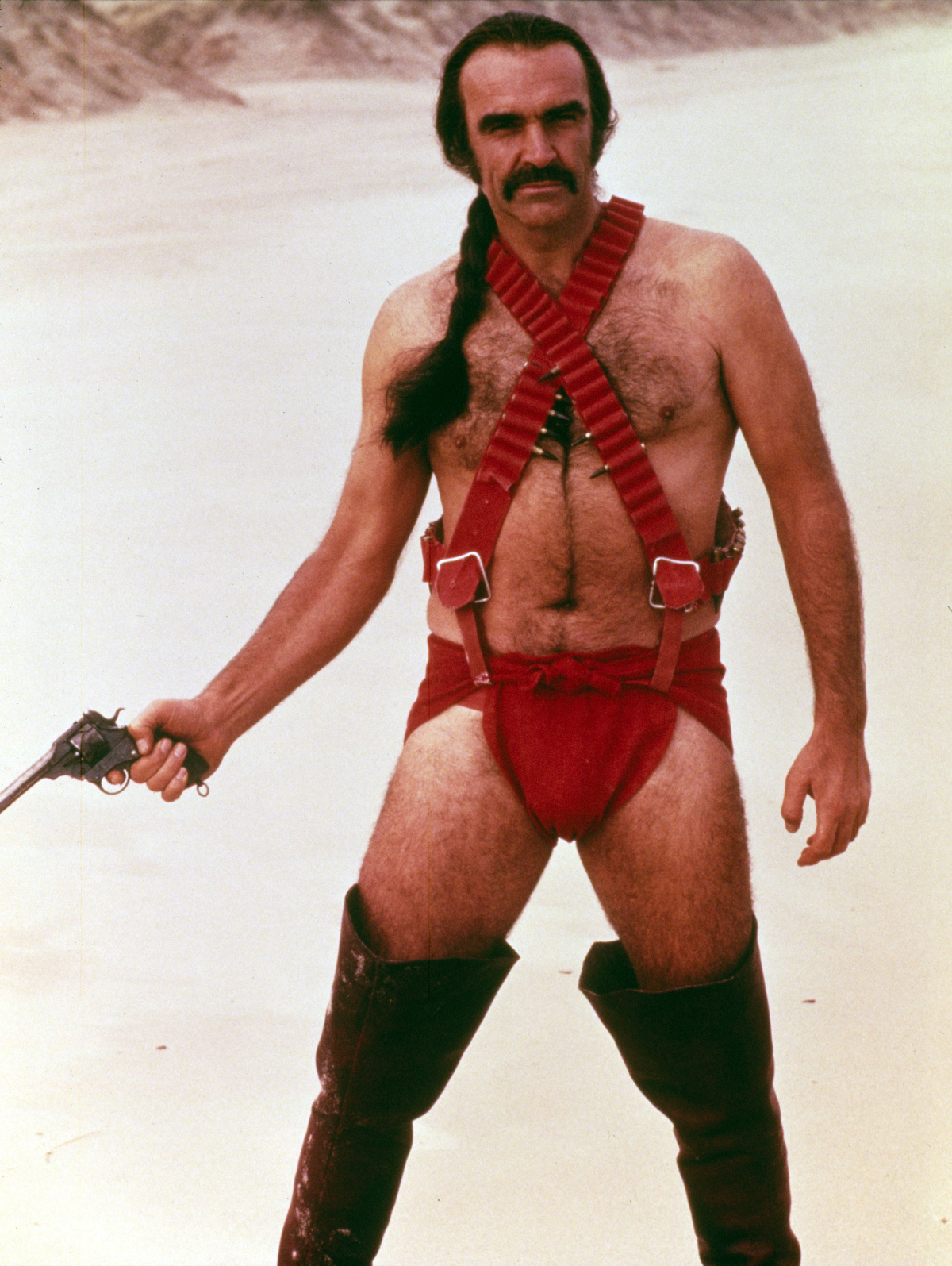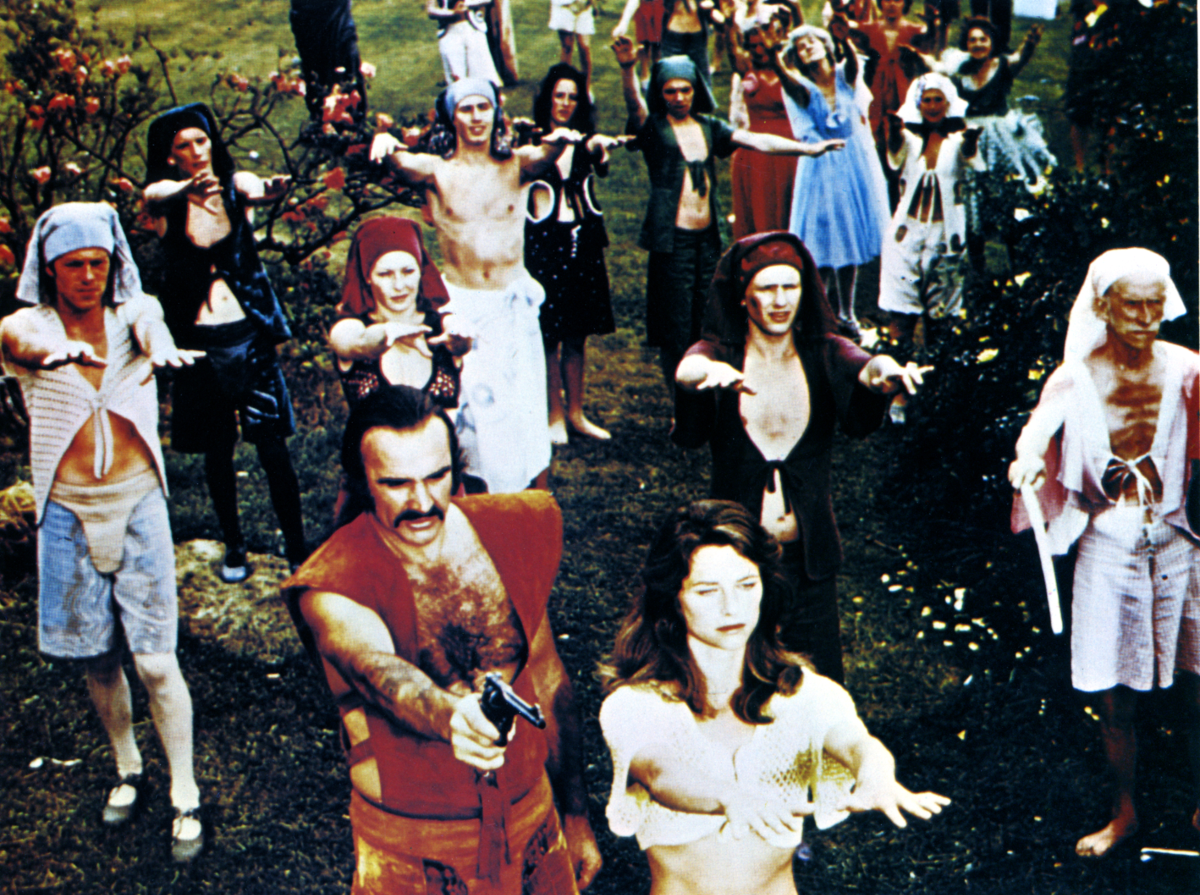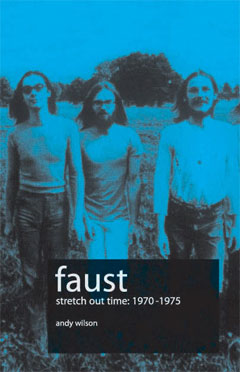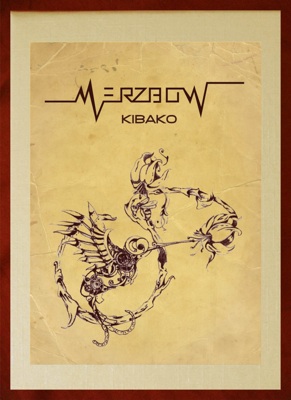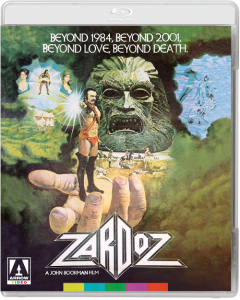 If you were to look for a definition of the term “cult movie”, you might find the huge stone face of Zardoz staring back at you from the page, bellowing “the gun is good, the penis is bad”. Because it is for this and dozens of other images of batshit unheimlich that Zardoz has earned its cult status.
If you were to look for a definition of the term “cult movie”, you might find the huge stone face of Zardoz staring back at you from the page, bellowing “the gun is good, the penis is bad”. Because it is for this and dozens of other images of batshit unheimlich that Zardoz has earned its cult status.
By the 1970s, science fiction novels had not looked like Star Wars for a long time. The new wave of SF spearheaded by Michael Moorcock’s New Worlds and Harlan Ellison’s Dangerous Visions is far closer in tone to that of Zardoz; pessimistic, hallucinogenic and just plain out there. The inter-dimensional milieu of Zardoz would not seem out of place in a novel by Roger Zelazny or Keith Roberts, and its telepathic commune, sexual appetites and scenes of inner space delirium are far more in keeping with the mood of its time than Lucas’s chaste matinée fare.
And it is not alone in its apocalypticism. Robert Altman’s Quintet later in the decade has the same mood of pessimism as Boorman’s film, but Quintet plays the Fimbulwinter of ice age entropy to the hot house of Zardoz’s perverse Edenic meltdown. And it is the generous salmagundi of Boorman’s film rather than the austerity of Altman’s that has won Zardoz its cult following.There are worlds nested within worlds in this film, the classical unities are smashed over and over again as space-time bulges out into strange muscular contortions: Sean Connery as Zed chasing his own ponytail through a mirror maze; Friend, played by John Alderton, with a face contorted by his fellow communards’ psychic oppression shouting “I will not go to second level with you!”; Zed leading his cohorts through an avenue of statues which are reassembling themselves from shattered ruins while advising them “stay within my aura”.
But it is the deepest layer of the onion in which, at the heart of a derelict library the trickster Arthur Frayn reveals the secret of The Wizard of Oz, that Zardoz shines with prismatic intermediality. Here and within the crystal dimension of the tabernacle where the knowledge of the eternals is presented as an audacious audiovisual collage, the full scope of Boorman’s ambition is revealed. This is science fiction epic on the encyclopaedic scale of Paradise Lost. There is nothing in ’70s SF cinema that can match this scale of ambition. In the television of the previous decade, The Prisoner comes close to this degree of playfulness, and in its vision of labyrinthine folly there is a parallel spirit at work here. M John Harrison, author of the Viriconium and Kefahuchi Tract sequences, recently suggested that the commonplace that SF is a literature of ideas might be usefully replaced by SF as a literature of images, and on this basis Zardoz is a triumph. Quite apart from anything else, Zardoz is sumptuously gorgeous on the eye as a parade of images, and for this reason alone the blu-ray of the film must be applauded.Zardoz baffles the mind with its contortions of space, time and rationality, to free the eyes to be dazzled and enraptured by its orgiastic beauty; and herein lies the whole art of cinema.
-Iotar-
